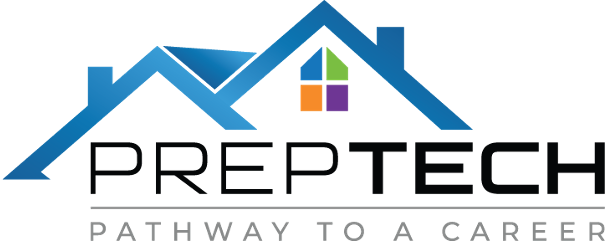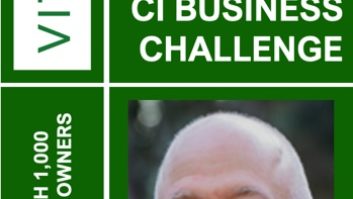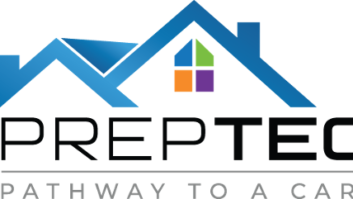
In a world filled with uncertainties, there are at least two things we can be sure of: [1] There are a number of crushing business problems affecting the custom integration industry; and [2] Paul Starkey is working on ways to solve them.
Recognizing that most dealers come from the technology side and have no real business training, Starkey formed Vital Management with his partner Steve Firszt and introduced the Bi4Ci program — business intelligence for custom integrators. Proving those techniques are effective, the duo formed Bravas, which merged several luxury custom integration businesses under one umbrella company and put them on the same business management system. This type of model has failed in the CI arena before — and drew some skepticism when it launched — but Bravas has shown how it can work.
Now that Starkey has sold Bravas and Vital Management to other investors — although remains a shareholder and consultant, respectively — he has turned his sights on big problem that has been plaguing the industry for years: staffing.
We sat down with Starkey to discuss his roles in his previous ventures, as well as how his current efforts can make an impact on custom integration businesses.

RESI: With Vital Management, your goal was to help custom installation business owners get better at the business side of it. Since you started all those years ago, do you think they’ve gotten any better?
PAUL STARKEY: Most business owners don’t get into this business with a financial or accounting background; they come from tech or they come from sales and they pretty much invent their accounting system. That hasn’t changed.
I think as much as we talk about business acumen, we still see a lot of gaps in knowledge. Some of it is because the profitability in this business is pretty easy to obtain, so the levels that the companies perform at are good enough in their minds. They’re not losing money, but they’re probably not making as much money as they should.
Part of what we’ve tried to do is, through metrics, share what can be possible and then educate them on the fundamentals of strategically setting up their books. We probably fail as an industry in that we don’t have a basic profit math class.
A lot of what we’ve done for the last eight years has just been to coach on business fundamentals. It starts with the bid — if you don’t bid properly, you can’t get to the finish line in a stronger way. We’ve touched a lot of companies — we have probably had connections with almost 400 integrators. What’s difficult in this business is what we’re trying to convince them to use is like the broccoli and Brussels sprouts of the business — it’s not exciting and it’s not fun.
What is your relationship with Vital Management now that it has been sold to a group of industry colleagues led by Matt Bernath and Jeremy Burkhardt and rebranded as VITAL?
Steve [Firszt] and I are still actively supporting the new owners. We’re not employed by them, but we have a vested interest for them to do well, so we continue to consult and advise.
What’s really interesting about what they’re going to do — that we never got around to — is take a more systematic approach to it. We focused on a handful of clients and we ran out of bandwidth, but with the new approach we think they’ll be able to reach more companies with the same techniques, philosophies, and strategies, which is very encouraging. Matt and his team are committed to making this information more available and lessening the threshold of pain for implementing these ideas.
Steve and I are at the sunset of our careers, so we’re happy to have guys who will take it on for a long time. And now that I’ve said that, we’re going to talk about my new ventures, so I wouldn’t suggest retiring anytime soon!
Related: Paul Starkey Issues 2022 Challenge to CI Businesses
So, you have sold all of Vital Management?
No. Steve and I have retained a part of the business, which conditions companies to be bought by Bravas. We didn’t sell the company — we sold the assets of it. Steve and I kept our partnership intact, but we are rebranding as Aspire Liquidity Partners. Right now, we have five clients that have hired us to work with them to improve their businesses, but also to put them in a position of being bought by Bravas.

Let’s talk about your other current venture, PrepTECH. As someone who’s seen so much in so many different areas of the industry over the years, why do you think finding workers has been so hard for CI dealers? And this has been for years — well before the pandemic — so you can’t even blame it on that.
We tend to take the easy way out — we just go hire other people’s people. These are mostly small companies that don’t have resources to continuously search for employees and recruit them. Most companies have less than six employees, and even the ones that are, let’s say, $2 million in revenue or more, which is like 10 employees, they’re limited in the amount of time they can put on this. So, they recruit out of need — it tends to be an in-the-moment activity for most of the companies.
The worker shortage is a problem not only for us, but for almost everyone. What we saw was the opportunity to do something that isn’t easy, which is to find people who aren’t in this industry but who are high-potential candidates. That is a pretty hard task, but it revolves around establishing relationships with the schools — whether it be high schools, trade schools, tech schools, community colleges — and the military. There’s 20,000 military people coming back into the job force every month.
Adding a tech brings a labor revenue potential to the business of between $80,000 and $100,000 — that’s what a dealer is going to charge for that technician over the course of the year. You can add about 2.5x or even 3x that for what it means at the street-level retail dollars. Hiring one tech has a big impact on the growth of the business.
Our thinking was that this business needs to add about 2000 techs a year to keep a double-digit growth going. We have got to fix this problem if the industry is going to grow, so I have a great partner with Helen Heneveld. We started about four months ago putting the platform together, PrepTECH, which starts with a vetting testing aptitude test that we’re able to see which respondents have the highest potential to work in this field. That’s about a 45-minute investment for the candidate. And then, based on the test, we award them a scholarship that is provided by a manufacturer or association. Right now, our scholarships are coming from AudioControl, which is one of our manufacturing sponsors, or Home Technology Association (HTA).
With the scholarship, they get about 60 to 65 hours of online training. It’s not vendor-specific; it’s fundamentals. And at the end of that process, you will have a person who was willing to take the test, was willing to invest 60-plus hours in online training, passed all the courses, and is now ready to engage with employers. Pretty hard to find somebody in our business who isn’t interested in hiring somebody at this point, so then we have the easy job of connecting the dealers with our graduates.
We decided not to go national in the beginning — we’re doing a local pilot in Dallas-Fort Worth, TX. There’re a few reasons for that: There’re lots and lots of dealers, the market is boiling hot with construction and high-end construction, and there’s a good source of both military and schools that could feed this system. We’re proving the concept in one location with the idea that we would roll it out to 12 or 15 locations over time. The important ingredient is we’re building local relationships where we’re out doing the footwork that the dealers don’t have time to do.
On the other side, the how-does-this-make-money side of the business, our model shows that we could provide a new candidate to the dealer for somewhere around $2000 per hire. It’s a flat fee and not a percentage of the salary. If you go a year and you don’t hire anybody, it costs you $1000. If you do hire, we give a $500 credit back for the first two hires.
Remember: We don’t position this as training. We are just trying to get baseline credentials under peoples’ belts, either through the cognitive motivational personality testing or through our basic course content, which is far from everything they need to know. They will know the many different signals; they’ll know the wiring used; they’ll be able to set up a network; and they’ll have the basics of audio-video and the core technologies.
We also do some soft skills training; you are putting people in very high-end houses and working in a team environment, so you want to make sure that they know what’s expected of them.
We’re excited about the progress we’re making with the platform. Plus, we’re also going to go a little further. We think it’s important that companies have a standardized way of onboarding these new employees, and most small businesses don’t have a good checklist. We’re going to provide that to them so they can customize it to what they want to use. It’s important that they hire, but the people have to stay and become productive.
Raising awareness outside of the industry seems to be a key component of the plan. How are you working with high schools, trade schools, and the military?
The easy way is to just use the job boards, but it’s not quite as effective and sustainable as relationships. What’s interesting about the high schools in Texas — and I don’t think it’s unique to Texas — is that they have technical academies, which are tracks that students can take to become proficient at certain skills. And they have a lot of resources — guidance counselors and people set up to help make the connections — but getting them to know about custom integration is an education process.
I think our challenge is going to be figuring out what period of time can we reach critical mass in a locality, where can we have 20 or 30 relationships that can provide a couple of students a year. We don’t need 20 from each school — we’d like to get the best two or three. I’ve talked to dealers who have some of those relationships, and what they find is when somebody takes a job and they love it, they go back and tell the class behind them. So, it creates a reoccurring funnel of talent.
What we don’t know at this point, because we’re in our first six months, is how long it will take to build those relationships. The aptitude test is very well proven; the content is very well proven — what’s not proven is the ability to harvest through these relationships. I’m always grateful when things are hard, and it’s pretty darn hard right now. I’m very grateful at the moment.
How many people have taken the test so far?
We have close to a hundred who have taken the test. Our early experiences suggest less than 15 percent will meet the standard that we want with this. Our tests are free — nobody pays for the test and, frankly, nobody pays for the training. There’s an option for a candidate to pay for it if they fail the test and still want it, but anybody who passes gets a scholarship, which is valued at $5600.
So PrepTECH, Aspire Liquidity Partners, consulting with VITAL, a shareholder in Bravas…anything else going on?
I’m promoting my book, Hitting for the Cycle. It’s 55 management actions. It’s a super-condensed, Reader’s Digest version of the fundamentals of the business using the analogy of hitting for the cycle, which is a single, double, triple, and home run by the same person in the same baseball game, which is a pretty rare feat. This book shows the basics of what they need to do, and it gives them a prioritization method so they can actually develop a specific improvement plan. It’s all the answers to the test. Most people will need some guidance, and that’s where Matt and his VITAL team would come in; helping them implement a lot of that.
That’s a $1000 book that I’m selling for my Building Better Lives foundation, and I’ve had 30 sold already. That foundation is for victims of sex trafficking, and DMF Lighting has just announced a program called “Shine a Light” where, for a full year, DMF donates $2 to Building Better Lives for every fixture a dealer purchases. It’s a huge potential for funding the foundation. So those are just two things in my spare time that I spin up when I’m not doing anything else.
I picture you having a list of all the industry’s problems and just checking them off as you go down. What do you have listed after staffing?
There’s this question of getting dealers certified on project completion and satisfaction track record. I think it’s one thing to train, but we’ve got to make sure if somebody’s carrying our industry’s seal that they’ve got to be finishing the job and servicing the customer. I think that’s another opportunity. I haven’t thought about the business model for it, but I think that’s an area of need. Stay tuned.
Related: Hire More Now






